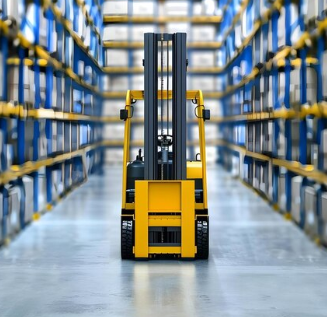Electric Stackers: The Future of Warehouse Efficiency

In material handling and logistics, the demand for the most efficient, safest, and eco-friendly equipment has never been higher. Among many innovations revolutionizing this sector is the one that stands out as a game changer- electric stackers. These versatile machines have been designed to streamline warehouse operations better than traditional manual and semi-electric stackers.
What are Electric Stackers?
Electric stackers are electric battery-powered material handling devices that primarily use lifting, transporting, and stacking pallets and other merchandise within a warehouse setting. The electric stacker differs from the manual stackers driven by human power to move and lift loads, where an electric motor makes operations easier and more efficient. They suit small and medium-sized warehouses, retail outlets, and industrial applications where the need to lift pallets arises frequently but not to an extent that calls for the use of an entire forklift.
Significant Benefits of Electric Stackers
Higher Efficiency
Electric stackers significantly increase the efficiency of warehouses. These equipment can lift and move heavy loads using minimal effort from man, thus making it fastly operate than their counterparts handled manually. Besides being speedier, this method lessens the level of fatigue in such a way that workers gain ample time to perform other important functions.
Better Security
Safety is a very basic issue in any handling of materials process. Electric stackers offer protection features such as automatic braking systems, load sensors, and stability controls that make accidents few in such places. This makes them safer than manual stackers particularly when moving heavy loads at high levels.
Eco-friendly and cost-effective
Electric-powered equipment is gaining ground in businesses because of efforts to cut down on carbon footprint. As electric stackers do not emit direct emissions, they are eco-friendly. Along with that, they save fuel and are less in maintenance as compared with the gas powered forklifts.
Versatile and Compact
Electric stackers are made to run in cramped spaces, thus ideal for applications where maneuverability is needed. Compact in design, electric stackers can navigate narrow aisles and tight spaces, which is quite important for warehouses to optimize storage capacity.
Ergonomic Design
One of the biggest advantages of electric stackers is ergonomics. The electric stacker reduces the amount of effort exerted on operators with its design. These stackers have an adjustable handlebar, smooth steering, and user-friendly controls. This not only enhances productivity but also minimizes chances of work injuries.
Types of Electric Stackers
Electric stackers come in different types to equip the changing needs of distinct warehouses:
Straddle stackers
Straddle stackers are equipped with legs which “straddle” the load, providing stability and enabling a pallet to be lifted straight from the ground. They are therefore suited to applications where loads must be raised from pallet racking or stored in narrow aisles.
Counterbalance Stackers
Counterbalance stackers are intended for counterbalance only. They can raise really heavy loads without more support, just like a traditional forklift. They can be used in large applications and high loads that require precision when stacking and positioning.
Walkie Stackers
Walkie stackers are operated where the operator walks behind the machine. A walkie stacker is better suited to applications requiring lighter-to-medium-duty where operators need to move and stack loads over short distances.
Ride-On Stackers
Ride on stackers provide the operator with a standing platform while working thus are well suited for longer distances and heavier loads. They also tend to be more efficient and reduce fatigue for the operator.
Applications of Electric Stackers
Electric stackers are handy for a wide range of activities and industries. Some of those include applications in
Warehouse and Distribution: where efficient storage and retrieval of goods take place especially in narrow aisles and high stacking environments.
Retail: High-inventory retail stores use electric stackers to manage their goods faster and easily in the backrooms.
Manufacturing: In production lines, electric stackers assist in the movement of raw materials and finished products, making the workflow much smoother.
Logistics and Transportation: Electric stackers make the loading and unloading processes easier and even more efficient, therefore making the logistics center utilize them highly.
Conclusion
Electric stackers convey an era of great change in the dispensation of material handling technology. And finally, electric stackers offer more efficiency, safety, and environmental benefits; hence today, they appear to be an indispensable tool in the warehouse. Electric stackers seem to continue their importance in optimizing operations and responding to the rising demands of industries worldwide in very flexible forms that come in many different environments and types of loads.
Apart from helping efficiency in operations, investment in electric stackers develops sustainability and ensures a sound safe working environment. Electric stackers offer smart forward-looking solutions to the companies determined to stay ahead of the wave as the market continues advancing.





